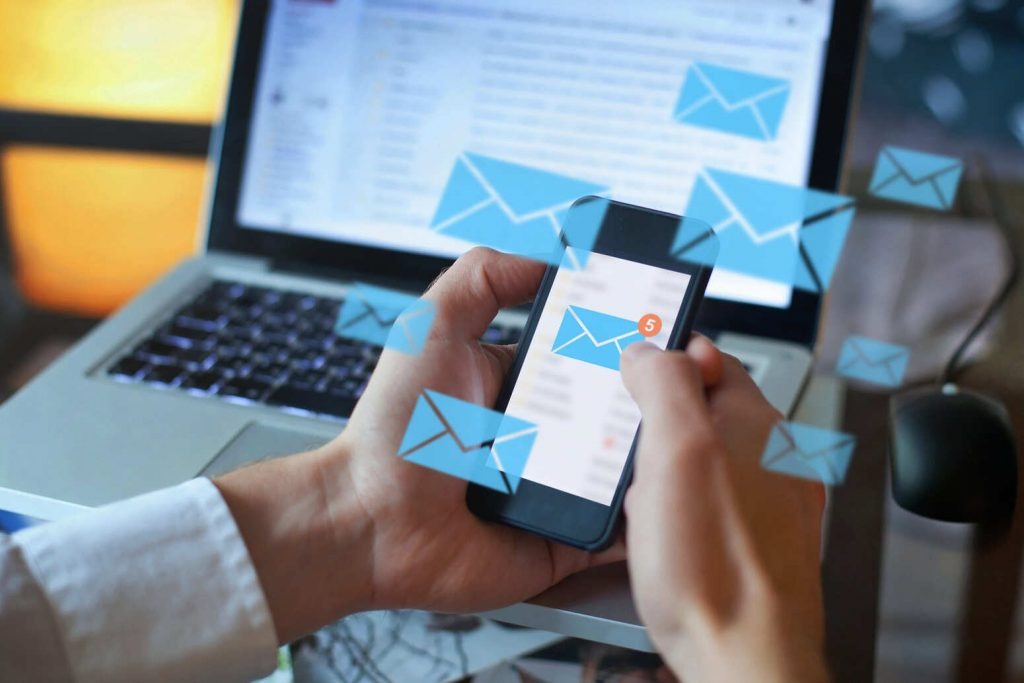Have you ever pondered on how many work emails per day is normal? Well, I’m quite sure you did.
Continue reading this article to get your answer; currently, email is one of the most appreciated communication platforms, and almost everyone has an email account; however, it’s not a new concept.
Since its inception, emails have been steadily replacing the use of postal delivery all because of their speed and feasibility.
The first email was sent fifty years ago, back in the year 1971.
Post Contents
The Relevance of Email
Electronic mail (better known as email) is a handy tool planned originally for swift messaging.
On the other hand, it’s no longer just a mode of communication for individual use. More or less all businesses, use emails for almost all their communication needs, and it is constantly used as a successful promotion instrument worldwide.
The worldwide COVID-19 pandemic has transformed the way we think and respond.
During the pandemic, many companies went digital for the reason that consumers to a great extent moved en route to online channels.
And, it has also drastically impacted the number of emails sent daily. At the same time, countless persons feel overburdened by work email post-pandemic.
The number of work emails the average employee receives per day is huge.
Anyone who has been out of the office for a day or two will have experienced the overwhelming number of emails accumulated on their return to the office.
Thus, knowing how many occupational emails per day are regular is quite significant. People these days have a bizarre love-hate association with email.
You need them to communicate with your colleagues and other members of your organization. But, plowing through a huge pile of emails is a loathsome task!
How Much is Too Much?

Surplus emails can also crowd out the crucial ones that employees need to deal with on priority, making them annoyed.
The unnecessary quantity of emails is overwhelming. We unquestionably need to know how many work emails per day is normal. The correct answer to this question is reasonably debatable.
While several inbox avoiders believe one email per day is too much and inbox embracers believe the reverse.
They consider that emails are an ingredient of their employment and they should be dealt with professionally and courteously.
As the number of emails employees receive increases, analysts allege that email overload is a matter of concern.
Studies reveal that it can take over 20 minutes to focus on a task after getting interrupted by an email.
Furthermore, regular email disturbance can momentarily lower one’s IQ level by an average of 10 points, diminishing their competence in completing a task.
How People Consider Emails
Nevertheless, while these two types of individuals, the “avoiders” and the “embracers” are opposite poles, largely individuals fall into a third group regarding work emails, the “inbox ambivalent.”
This type of person thinks that too few emails indicate that a person is out of touch while receiving too many associates with being overburdened.
They anticipate getting the right quantity of emails daily.
For instance, if someone desires to invest 20 minutes of their day on emails, and assumes it takes roughly one minute to deal with one, that means 20 emails a day is regular.
So, how many work emails per day is normal?
Even though experts are still pondering over the question as to how many work emails per day is the norm, fresh data reveals that over half of the entirety of emails out there are spam.
Now, you might feel saddened looking at this data, but trust me, the data revealed in recent research is even more disappointing.
As per the spam email data over the years, 94% of all emails received were spam. Various other factors determine the increase and decrease of email in a person’s account.
Several Email accounts serve different purposes.
Individuals prefer to have different email accounts for different reasons such as the need to divide confidential matters from business, to shield their online personality, and as a means of getting better security.
As per the recent surveys conducted, the normal number of email accounts to one user is two.
But there are also those who tell us that this number is expected to reach the higher ground by 2022.
The number of email users universally is rising owing to the increase in digitalization and upgrading.
Usage Across the World
There are those who feel that email usage is subsiding gradually as predicted over the last decade. But it turns out to be absolutely contradictory.
Despite the exponential growth of social media, online messaging apps, and text messages, the number of email users keeps on mounting drastically.
The occurrence of the COVID-19 pandemic has added augmented use of emails as more and more companies use email for marketing purposes compared to pre-pandemic times.
2020 was a flourishing year for email as the number of users reached the four-billion mark. Half of the world’s inhabitants were using email.
Recent reports claim that the number will rise to 4.1 billion users in the coming years. There is no doubt that people know how many work emails per day is normal.
For the next four years, the estimated growth rate of email users is enormous. It can touch nearly 100 million per year.
That means we can estimate the number of email users worldwide in 2025 to be about 4.6 billion.
The Email Traffic
With the growing number of team members functioning remotely during and with the decline of the COVID-19 pandemic, knowledge dominates the way businesses reach out to their members.
Most of the business populace like to correspond through email for proficient or business purposes.
Talking about the emails connected to commercial space, the average employee receives approximately 126 emails daily or over 630 emails a week.
Those statistics are enough to eat up one’s time in a manner that is both understandable and menacing. It can even be maddening sometimes.
Therefore, experts continue to speculate to find out how many work emails per day are normal.
Just like a few factors play a significant role in shaping how many work emails per day is normal, the volume of emails a standard person receives each day also depends on various work factors and the profession of the individual.
Spam Email

Though email is a remarkably efficient medium for customer-centric promotion, the probability is quite high that the anti-spam mechanisms will filter off a few of these emails.
Statistics disclose that approximately billions of emails get bounced every day, which is moderately enormous compared to the stats on how many occupational emails per day are normal.
The bounced emails a day means that those emails never reach their planned recipient and all their hard work at the back crafting these emails is in vain.
Bounces are an essential part of email marketing, but that doesn’t essentially mean that businesses have to live with them.
Data also demonstrates that for every 100 emails sent daily, 15 of these get bounced. They fail to reach the inbox of the intended recipient.
Although the accomplishment rate looks quite great at first sight, the standard bounce rate becomes elevated when the total daily email count rises.
Such figures are undesirable for email marketers. Conversely, it’s very easy to conquer the issue of e-mail bouncing.
Brands need to be sincere, and their emails should only enclose authentic details, compelling the customer and the spam recognition bot to believe that they are not spam.
You need to create your emails carefully to make the content relevant and engaging. That way, you will capture the interest of the recipient and also pass the criteria of spam recognition software.
Thanks to a variety of email software providers having additional strong security methods, you can easily keep away from opening spam emails because it is quite easy to distinguish spam these days.
If you create typical spam emails, you can also end up at the business end of the spam recognition software’s stick.
Sent and Received Emails
A substantial number of emails are sent every day universally, and the data is endless and overwhelming.
While the majority of these emails are spam, some of these are work emails.
A working employee sends approximately 40 work emails per day while they accept somewhere between 100 to 120 work emails every day.
Experts are mindful of these figures, and that is why they are setting restrictions on how many work emails per day is normal.
These figures prove that emails are a fundamental part of business communication and can never be replaced by any new online communication technology.
You need to bear in mind that the ever-increasing figure of email users isn’t outrageous.
The number of emails arriving and sent daily has risen over the years, and the number is increasing day by day.
The Future of Email
By 2023, projections indicate that the number of worldwide email users will increase to 4.3 billion. So, the prospect is looking brilliant for email promotion.
Email is an exceptional type of communication in an era where individuals and organizations are digitally linked.
For a variety of reasons, some may opt out of some communication forms, such as social media in favor of email.
Due to its superiority and the information that it is viewed as a more certified form of communication, it is improbable that email statistics will lapse in popularity any time soon.
In fact, email is set to continue to increase in importance as people become more aware of its multiple benefits and concerns associated with erstwhile types of communication.
They may also turn to using email in favor of paper for instance with bank statements and other such documents.
The world is perpetually looking for paperless solutions to communicate and share information. Email meets all those requirements.
Until a communication structure arises which can outdo email across the world it will continue to be the biggest means of communication.
All of this means that email marketing is a pasture of vast possibilities.
As the statistics demonstrate, email enables a huge quantity and mixture of people to be contacted, meaning when organizations can augment their email communication to hold up their brand and marketing efforts, there is potential for huge accomplishment.
Email is Free

The price of an email is roughly nothing from the sender’s point of view, but for the receiver, in conditions of time and attention, it is high.
Senders do not believe in what it costs the recipient because the cost of sending is so cheap that we send it repeatedly often overdoing it.
Maintaining your inbox to just 15 or 20 emails at a time is a good practice.
Categorizing messages into folders and using routine filters can help stop the colossal shock that can appear when you see hundreds of unread emails on an occasion
Conclusion
That concludes the handling of statistics for how many work emails per day are normal.
Flanked by individual and work emails, we get a cluster of stuff in our email inboxes each day.
While some may be helpful, others are entirely insignificant. We get tons of emails that aren’t even essential to us in the form of spam.
Normally spam emails reach the spam folder. But occasionally, the anti-spam system fails to detect these emails, and they find their way into our primary email inboxes.
It takes up a considerable time dealing with emails we get every day. And in the forthcoming years, we can anticipate getting more daily emails.
This is why it is essential to know how many work emails per day is normal.
In this post, we have featured some relevant statistics related to emails and even attempted the most common email-related question – how many work emails per day is normal?
If you are a business owner, this could be a life-changing moment for you. You can now relate to how many necessary and unnecessary emails persons receive every day.
Thus, you’ll most likely be more cautious while sending recurring and excessive emails to your employees or workers.
And trust me, if you can organize the numeral of emails you send people every day, they will unquestionably appreciate it and will ultimately it can even increase their competence in the long run.






























